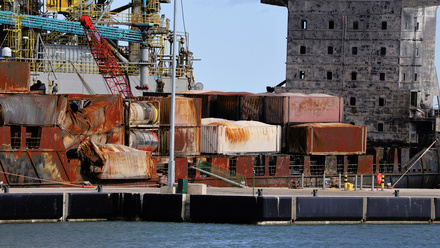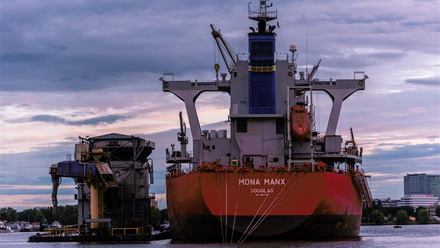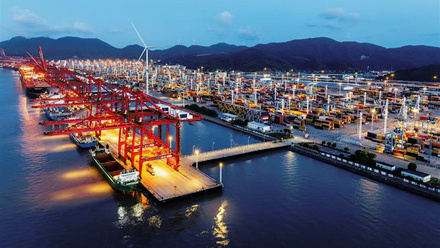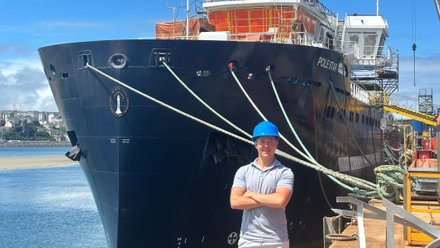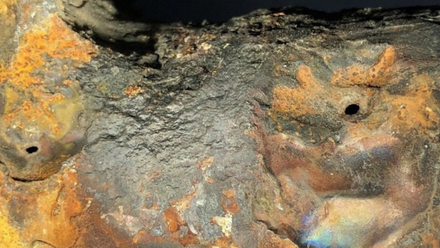Engine fire on board cruise ship results in injury and $2.4m in damages
Quick action by crew praised after preventing spread ‘and ultimately resulting in the fire self-extinguishing’.
Fire is a major concern for vessels, which spend much of the time well outside the range of help. Ships must bring their firefighting equipment with them, and crews must be trained, on top of everything else, to be firefighters.
Frequently in recent years, equipment and training have been proven unequal to the task, with fires claiming lives on car carriers and container vessels. But in one instance in October 2023, brisk action by the crew of passenger vessel Ocean Navigator doubtlessly saved many lives.
Originally built in Florida in 2004, Ocean Navigator takes passengers on scenic cruises along the west coast of the US and Canada. On October 18, 2023, the vessel was eight days into a ten-day itinerary, having set off from Montreal and made calls at Quebec City, Charlottetown and Halifax without issue. Arriving in Portland and initiating port manoeuvres at around 5am, an hour later an alarm triggered on one of the vessel’s two Caterpillar 3516B auxiliary generators, showing that it was working hard to generate power for the ship’s manoeuvring thrusters, and running hot.
Keeping an eye on it, engineers continued to run the engine as the vessel docked at Portland Harbour, whereupon both starboard and port main propulsion engines and manoeuvring thrusters were shut down. Noticing that the left and right bank exhausts were generating high-temperature alarms on auxiliary No.1, the crew shut down the engine, leaving No.2 to handle the ship’s hotel load.
With just 40% of the engine’s power required, it should have been more than capable. But when crew entered the engine room to perform maintenance on Auxiliary No.1, lube oil was being emitted from the crankcase of the No.2 engine. An engineer noticed one of the bolts turning by itself and the engine was shaking itself apart. As they moved to tighten the bolt, the engine “exploded”, sending gouts of fire across the engine room and igniting the spilled oil. On deck 3, the captain noticed the ship shaking, and black smoke emitting from the funnel.
Six seconds later, at 07:10:12, the generator shut down from low-lube oil pressure, causing a vessel-wide blackout until the emergency generator kicked in. The third engineer pulled the fire alarm and ran with his colleague up to the engine control room (ECR) where he noticed his coveralls were on fire. Extinguishing his colleague, the two then rushed to the medical station.
At 7:13am, the captain broadcast a coded message to the crew using the PA system. Crew donned protective gear and headed to the engine room, closing off fuel feed valves, ventilation fans, fire dampers, and watertight doors. The captain then sounded the order to evacuate, with passengers stepping onto the quayside as Portland firefighters arrived at 7:30am.
Ten minutes later, the fire in the engine room had been extinguished, yet black smoke remained. Assessment of the damage found that unsurprisingly, the No.2 engine was a write-off, but, chillingly, found also that a component, a connecting rod, had punched a hole through the engine block as it was flung toward the neighbouring No.1 engine.
Excessive wear and oil consumption
The postmortem on auxiliary No.2 showed excessive wear on the area of the crankshaft where the thrown rod had connected, a “failure classic for motor engineers,” according to IMarEST Technical & Policy Director, Alasdair Wishart.
Analysis noted that the generator’s lube oil consumption had been excessive, 42 gallons (159 litres) in two months compared with just 5 gallons (19 litres) for auxiliary No.1. On top of this, the engine’s lube oil filter had been running for 3,329 hours, three times more than the 1,000 specified by the manufacturer.
At some point, debris was thought to have entered the lube oil system, wearing away the surfaces of the connecting rod assembly and bearings until it eventually seized, swinging around the still-turning crankshaft until fragments broke off and smashed into other components.
“Therefore, it is likely that debris entrained in the lube oil system of the No.2 auxiliary engine led to the catastrophic damage to the engine,” the NTSB report determined. “As a result of the block rupturing, hot, atomised lube oil vented through the damaged inspection covers and ignited off hot components internal to the engine.”
NTSB noted that “quick action” to secure engine room ventilation by the crew helped to starve the fire and prevent its spread. While the damage totalled $2.4m, expedient action to contain the fire and evacuate the vessel averted what might have been a tragic loss of life.
Tell us what you think about this article by joining the discussion on IMarEST Connect.
Image: a cruise ship docked in Portland, Maine. Credit: Shutterstock.

